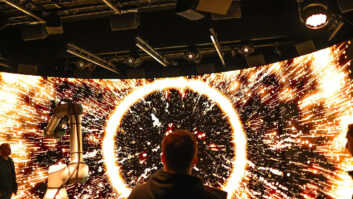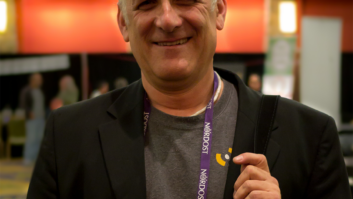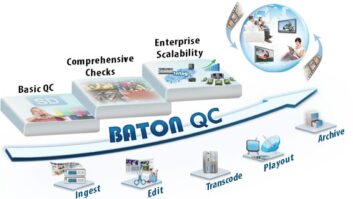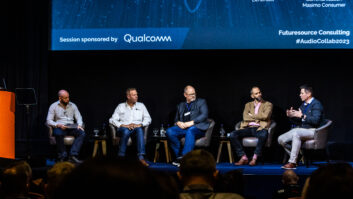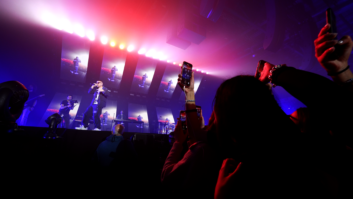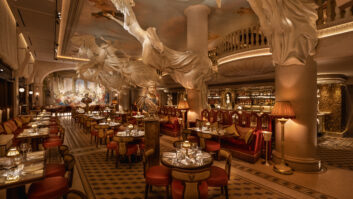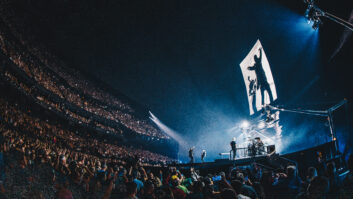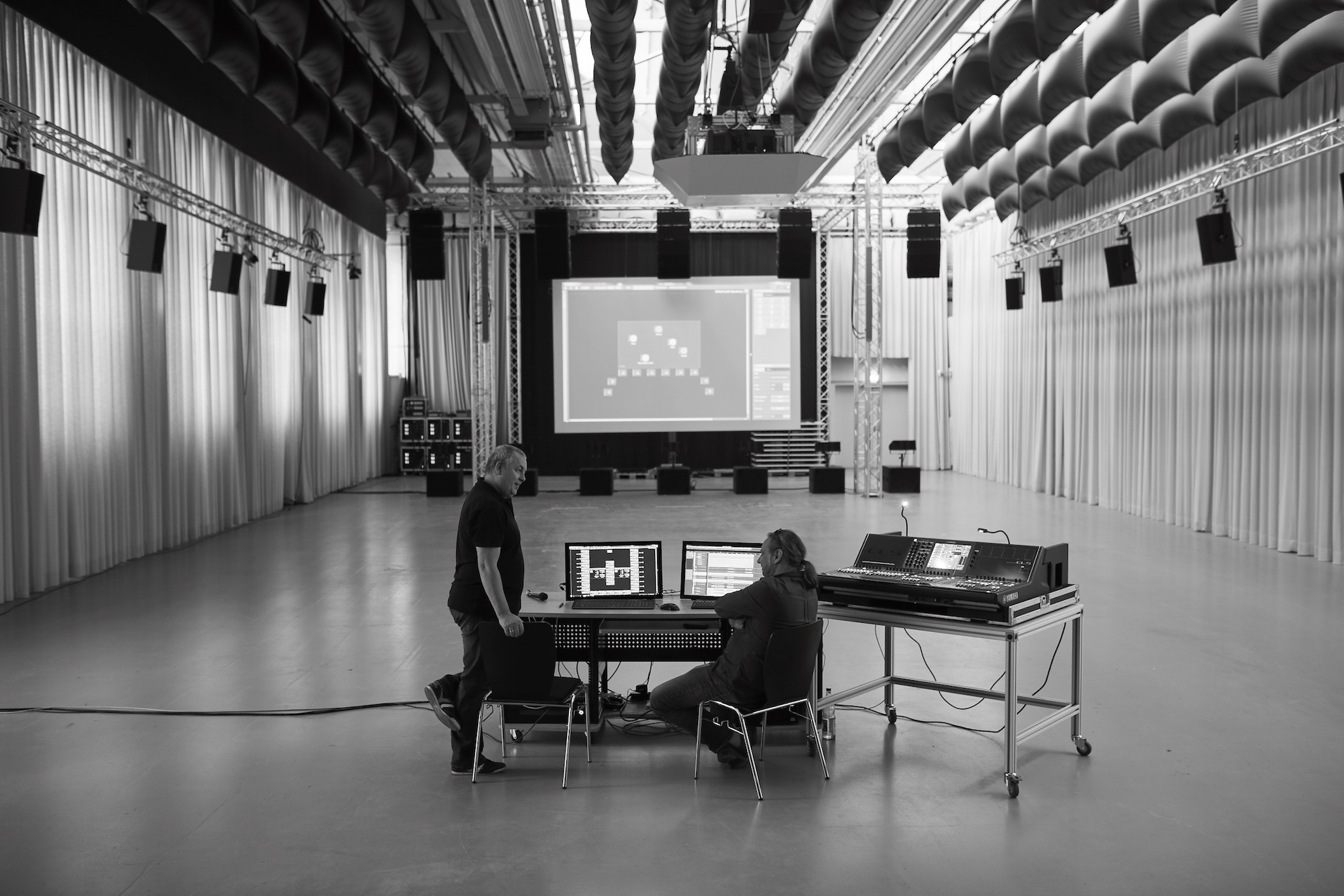
Having previously outlined the different approaches manufacturers and operators can take to immersive audio in concert venues, here we detail some of the technical intricacies and challenges to implementing a successful immersive audio solution.
It’s not clear what it will take for immersive audio to become a mainstream consideration in concert venues. There is much debate in and around London’s Royal Albert Hall at the moment, where new plans are underway for upgrades but where no consensus seems to be emerging with regard to precise configuration – despite the fact that, at the behest of the BBC, a L-ISA system was in place for the entire of the Henry Wood Promenade season, under the auspices of Delta Live.
Many observers point to improvements in video and lighting design and the need for audio to bridge a potentially damaging gap between what the audience sees and what it hears. They also point to the relative ease with which immersive sound can slot into production workflow. “It’s really achievable right now,” claims Guillaume Le Nost, head of R&D at L-ISA. “You can still use your existing speaker and console inventory to implement a quite revolutionary change. You only need to add the processor, which is just another box in the audio chain.”
It’s a sentiment echoed by Scott Willsallen, Emmy Award-winning sound designer and director of Australian consultancy Auditoria Ltd as well as co-director of UK-based Remarkable Projects. “The L-ISA Processor does all the hard work under the hood,” he says, “and all the console is doing is providing touchscreen control via the network – they have to be on the same Ethernet network. As far as workflow is concerned you don’t have to think about a delay matrix, just physically where should any specific sound come from. The difference is that the placement is much more precise, because it’s emerging from a single array rather than having to consider amplitude and time difference, plus you get the added three-dimensional elements of height and depth.”
For integrators, the challenges are the same as most conventional PAs apart from the issue of being able to size the system for the venue: it’s a quart-and-a-half going into the pint pot rather than the usual quart. ASA is now distributed in the UK by 2B Heard; alongside Italian speaker brand K-Array and the SSL Live console range. “Scalability is everything,” points out 2B Heard co-founder Sam Nankivell. “We can create an immersive audio space from a room 3m by 3m all the way up to arenas. Yes, it’s a part of the industry at the very beginning of its development, but we want to be at the forefront. We’re having conversations everyday that challenge preconceptions and explore ways of changing the paradigms.”
Scene and heard
Assuming fixed seating in a venue, the localisation techniques of immersive audio can ‘equalise’ the vagaries of the room and compensate for the time differentials of different sound sources, possibly for each member of the audience and certainly for each section.
“It’s really important that each speaker covers as wide a footprint as possible,” says Christian Heil, founder of L-Acoustics, “which is why we use the installed system that opens at 140°: a vocal, for instance, must be intelligible at every point. What’s really interesting is that it proves what I’ve always said about how to avoid cancellation in adjacent drivers: never put exactly the same signal through each one. We have to do that in line array, which is why the waveguide is so crucial, but here we don’t: even if you feed the same sound object through more than one speaker, we have developed ‘smart’ tools to de-correlate the signal from its neighbour.
“There are many important concert halls where, in truth, the sound is far less engaging than the visual stimulus – the performers, the gestures, the ambience,” Heil adds. “This is our challenge: to find a new way of reinforcing the sound of a performance. It’s frustrating that sound is so low in the list of priorities – perhaps fourth after video, lighting and scenery. It has been progressively relegated, and the irony is that you’re paying to witness a musical artist, after all.”
A new pattern of integrators is emerging with the necessary skills to deploy immersive audio solutions, helped by a new breed of distributor with the vision to supply them responsibly – witness 2B Heard, the only speaker-agnostic solutions partner for ASA in the UK. Martin Audio can sell Astro in the UK, but only as part of a complete system; and the same applies to Alcons Audio in Holland.
Soundscape’s system design took several years of network programming development and testing in a range of frequently arduous venues. Ralf Zuleeg, d&b’s head of sales services & application engineering, has every faith in the supply chain. “Current Soundscape installation projects are being done by consultants and integrators who liaise with us on the design as required, so we aren’t seeing too much change in the overall approach once the integrator understands the design principles,” he says. “With d&b and other professional products there’s always an element of education required for people to use them in the best way. Soundscape is no exception; in fact it requires a new way of thinking and allows for some things that were previously just not possible.
“Different people approach technology differently, Soundscape is a new way of thinking so it’s inevitable that that is also the case here. Some people, even people that have never worked with immersive technology before, have picked it up and run and we’re excited to see projects that we weren’t even aware of! Other people have been quite intimidated. The first hurdle can be huge, but once people get their hands on the toolkit and start to play the reaction has almost invariably been real excitement.”
d&b has been running invitation-only Soundscape workshops for a wide variety of people from DJs to sound designers, touring engineers to artists since its DS100 Signal Engine was launched in April this year. “As always,” states Zuleeg, “d&b is investing in education and application support. Our formal education programme starts in November, at our HQ in Germany, and more open invitation workshops are planned in the UK, North America and Asia Pacific in 2019.”
Out there
Not all immersive audio is automated by an algorithm. UK pioneer Out Board prides itself on going the extra mile in calculations, but recognises the learning curve of a geometrically unique venue. “Among the challenges facing venue integrators is to identify which of the interesting and worthy immersive audio products now emerging best match the expectations and applications of a given venue, and then which platform offers the relevant techniques and tools to achieve them,” observes Out Board’s Dave Haydon. “Equally important is for the integrator to identify and acquire the skills to implement and optimise the chosen technologies effectively.
“Most systems come with software tools to help things along, but certainly we’ve found from our own TiMax experience that it’s necessary to impart to designers and integrators the things we’ve discovered by experience over years. For example, system time-alignment is traditionally done to a single time-zero, whereas for multi-zone panoramic localisation there will be multiples of these, usually rendered as spatial objects. This applies also to immersive surround reverb, which while being enveloping and engaging needs to be focused and diffused appropriately so as not to be distracting.”
In an ideal world, the loudspeaker topology would exactly match the contours of the concert venue – then we’d have true reproduction. But the trade-off between reproduction and reduction is inescapable, and that hasn’t changed at all. Like the truth, immersive audio is out there – but it’s not alien. Just beware of unidentified flying objects.
www.2b-heard.com
www.auditoria.systems
www.dbaudio.com
www.l-acoustics.com
www.outboard.co.uk
www.remarkableprojects.co.uk
